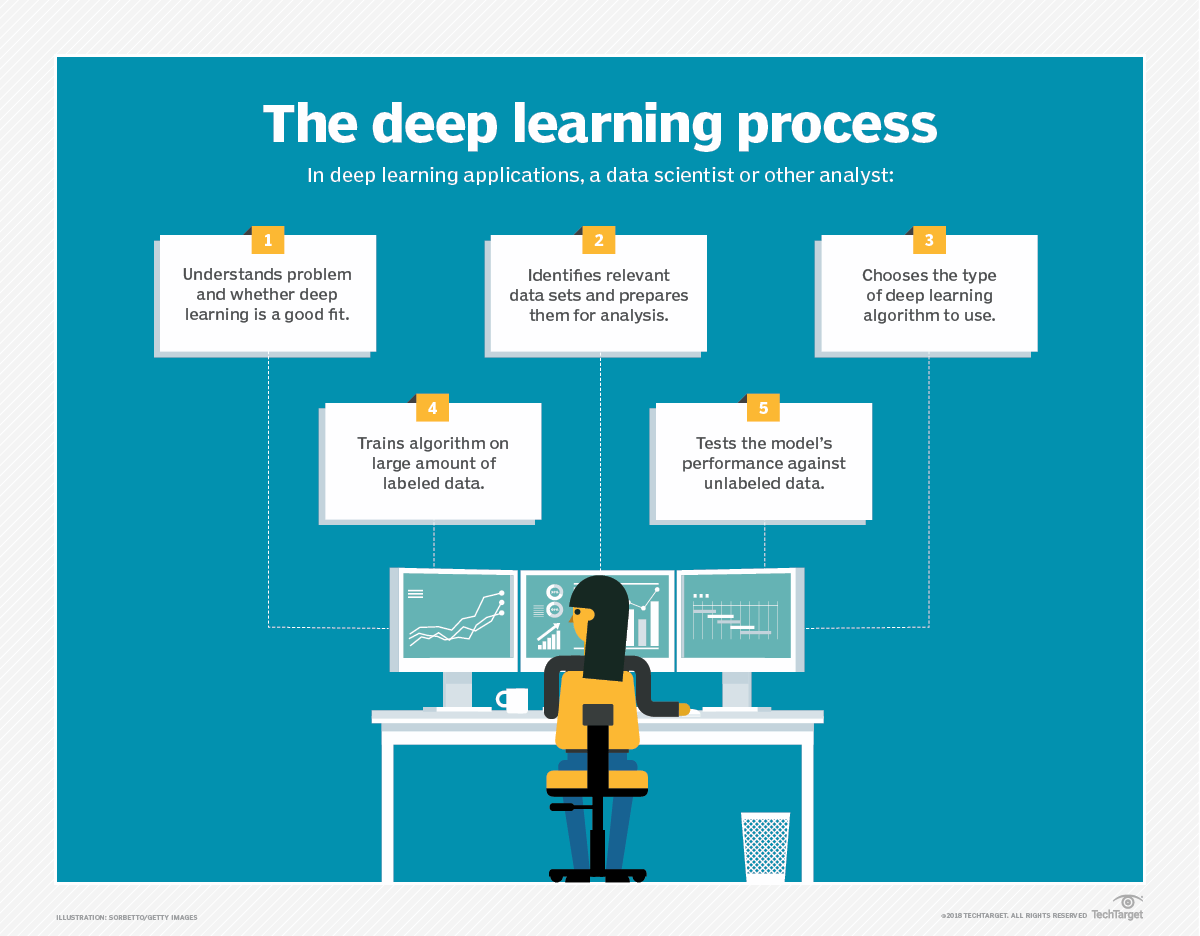
Machine Learning is currently the fastest growing subset of AI. Deep Learning, a subset of Machine Learning, can be said to be its bleeding-edge. Deep Learning has networks which are capable of learning, unsupervised, from data that is largely unstructured and unlabelled.
The digital era has brought about an explosion of data from a variety of sources, including but not limited to social media, search engines, e-commerce platforms, online videos, sensors and others. All this data, in very large volumes, is typically referred to as Big Data and, as may be apparent, much of this data is unstructured. Analysis of this data to find some correlations and patterns and hence the answer to certain questions is generally known as Big Data Analytics.
Machine Learning is a self-adaptive algorithm that gets better and better at analysis and at figuring out patterns with experience or with new added data. While classical machine learning is mostly linear, Deep Learning utilizes a hierarchical level of artificial neural networks which can be envisaged as a cascade of nonlinear processing units. Each successive layer takes in the output from the previous layer as input to finally carry out feature extraction and information. Most current deep learning models are artificial neural networks which means they are built somewhat like a human brain with neuron nodes at various levels connected together like a web.
Let us now briefly look at some Deep Learning applications which are getting popular rapidly.
Automatic Image Caption Generation:
This involves the identification of objects in images, associating labels with them and then stringing together these labels into one or more coherent sentences. Technically speaking, these involve the use of very large convolutional neural networks for the object detection and labelling and then the use of Recurrent Neural Networks to turn the labels into coherent sentences.
Automatic Text Generation:
This involves learning from a corpus of text and then generating new text on the basis of this learning, word-by-word or character-by-character. The model develops capabilities of learning how to spell, punctuate, form sentences and even capture the style of the text in the corpus that it has 'studied'. Typically, large recurrent neural networks are used for this.
Deep Learning in Healthcare:
 This exciting domain covers a whole gamut of applications like diagnostics including non-invasive diagnostics, monitoring certain parameters through apps using a variety of sensors, predicting health and probable ailments and prescribing personalized medicine on the basis of Biobank data. Innovations in AI and Deep Learning are advancing the future of precision medicine and population health management in unbelievable ways. Thanks to AI, computer-aided detection, quantitative imaging and computer aided diagnosis will become mainstream over the next decade.
This exciting domain covers a whole gamut of applications like diagnostics including non-invasive diagnostics, monitoring certain parameters through apps using a variety of sensors, predicting health and probable ailments and prescribing personalized medicine on the basis of Biobank data. Innovations in AI and Deep Learning are advancing the future of precision medicine and population health management in unbelievable ways. Thanks to AI, computer-aided detection, quantitative imaging and computer aided diagnosis will become mainstream over the next decade. Deep Learning in Finance:
Today, stocks are frequently traded via electronic exchanges. Traders are continuously submitting, cancelling, and executing buy and sell orders in the exchange’s limit order book. Since market events are often reported at the nanosecond granularity, the limit order book data generated over time runs into terabytes and petabytes. Deep learning algorithms can model key quantities, such as the probability distribution of future price movements, given the current state of supply and demand in the market.
Deep Learning in Manufacturing:
Smart manufacturing refers to using advanced data analytics to complement physical science for improving system performance and decision making. With the widespread deployment of sensors and IoT (Internet of Things), there is a growing need for handling big manufacturing data characterized by high volume, high velocity, and high variety. Deep learning provides advanced analytics tools for processing and analyzing big manufacturing data.
Predicting Demographics and Election Results:
50 million Google Street View images were used to explore what a Deep Learning network can do with them. Among the impressive results, the computer learned to localize and recognize cars. It detected over 22 million cars including their make, model, body type, and year. Going further from there, the model was actually able to predict the demographics of each area by the car makeup of that area. Among the many insights that were generated based on the demographics deduced from the car makeup, here's a cool example: "If the number of sedans encountered during a 15-minute drive through a city is higher than the number of pickup trucks, the city is likely to vote for a Democrat during the next Presidential election (88% probability); otherwise, it is likely to vote Republican (82% probability).
AI and the cutting-edge subset of Machine Learning, Deep Learning, is evolving and breaking new ground rapidly. New applications are limited more often than not by the innovative thinking of managers and professionals in most sectors.

Comments
Post a Comment